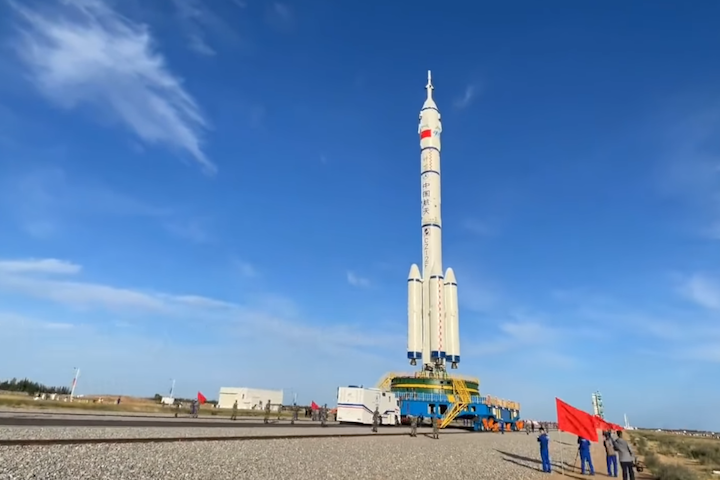12.07.2021
China continues to burn all the fuel in its launches, allowing the used-up rockets to fall back to Earth uncontrolled.

On July 3, another Chinese rocket fell to Earth. But this one landed in the Pacific Ocean with very little splash.
The Long March-2F rocket launched June 17 from the Jiuquan Satellite Launch Center in northwest China. It carried the Shenzhou-12 spacecraft and three Chinese astronauts to the country’s new space station. Then, just like its higher-profile predecessor, the Long March-5B, the rocket ran out of fuel after boosting the astronauts into space and began to free-fall back to Earth.
Just like with the earlier rocket free-fall, the task of tracking its path fell to U.S. Space Command’s 18th Space Control Squadron at Vandenberg Air Force Base in California.
“The 18th Space Control Squadron confirmed that the uncontrolled reentry of the CZ-2F rocket body occurred on July 3, 2021,” said Diana McKissock, lead for the squadron’s space situational awareness and coalition engagement office.
The Long March-2F is about half as large as the Long March-5B, which is the largest rocket China has launched to date. When a 100-foot section of the larger Long March-5B fell back to Earth in May—it was carrying the largest part of the new space station those astronauts are now inhabiting—its size and the potential threat prompted questions to Defense Secretary Lloyd Austin as to whether the military would shoot it down to protect any communities in its path.
Usually when a country or private launch company sends a rocket into orbit, operators reserve enough propellant after it has separated from whatever capsule it carried to be able to fire the thrusters for a controlled reentry into the southern part of the Indian Ocean, said Todd Harrison, director of the Aerospace Security Project at the Center for Strategic and International Studies.
“That’s the responsible way of doing it,” Harrison said. “They [the Chinese] are just letting these things fall wherever.”
Since the high-profile May rocket incident, the 18th Space Control Squadron has tracked “23 space objects larger than one square meter” that also fell to the Earth, McKissock said. However “none were as large as the CZ-5B rocket body,” she said.
This month’s free-fall may not have garnered the same attention as the May incident because of high-profile news on the ground, including wildfires on the West Coast and the deadly collapse of a condominium complex in Florida, said John Ferrari, a retired Army two-star general and a visiting fellow at the American Enterprise Institute.
“We’re just used to things falling from space,” Ferrari said. “Unless it lands on someone’s house, no one cares.”
During the May crash, 1st Lt. Nathanael Hendricks was an 18th SCS commander of a five-person crew that tracked the Long March-5B. In that incident, the crew got a raw feed of data from satellites and radars operated by the U.S. Space Force, then posted public updates based on that data about where the rocket was expected to re-enter Earth at Space-Track.org.
The free-falls are just a handful of the 32,000 objects orbiting Earth that the crew tracks, Hendricks said.
“We’ve got to analyze that data, determine what's falling out of the sky, what's conjuncting with something else,” Hendricks said, describing the additional role the squadron has of predicting potential conjunctions, or collisions, of space debris.
For now, that will continue to include free-falling rockets. In 2020, pieces of another Long March-5B fell on Côte d’Ivoire on the west coast of Africa.
While China’s space capabilities are quickly rising, “They are not as experienced a space power and they have a different risk calculus,” Harrison said. “Ultimately, this is a risk that is shared by the global community. So most of the risk of this object hitting a plane, or falling to the ground, is borne by others.”
Quelle: Defense One
